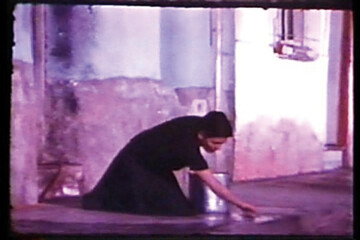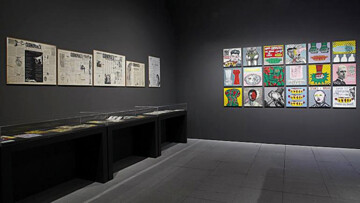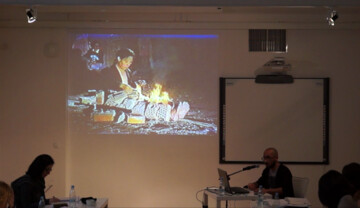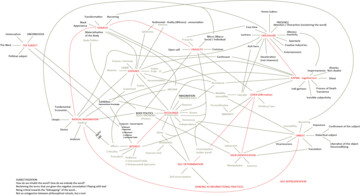In 1989, Félix Guattari argued that reality was structured according to three ecologies – the environment, social relations and subjectivity – whose balance would be under a constant threat of damage due to external factors and internal entropy alike. Guattari’s approach, carried out during the end of the so-called Cold War, proposed such damage as a system founded on the fragility and constant risk of collapsibility that the strata of these ecologies would live within. The concept of fragility allows for creating a diagnosis about the unstable balance in which contemporary society is built and its process of subjectivisation, functioning, from a materialistic point of view, beyond the threat of strictly symbolic instability. At the same time, fragility would contain an inverted revolutionary potential that would operate at the intersection of the ecosystems with “the molecular domains of sensibility, intelligence and desire”.[1]
Fragility would then allow forms of the → common that can activate, from below, alliances between the molecular domains and the ecosophies of the social and environmental relations. Recently, Paul B. Preciado made the call to be weak and despicable, “because it is through fragility that the revolution operates”.[2] Fragility would be a “war machine”[3], a tool for dismantling of the regulated forms of indoctrination that the dispositifs of the State and market generate. Dismantling these structures assuming the minority of the fragile would allow us to invent from failure, and to live a more sensitive experience through an ecosystemic vision that activates the fluidity among these ecologies. Appropriating a category such as fragility – often used with reference to financial, architectural and tectonic systems, and in discussions on global warming – also allows a process of semantic inversion to think about the systemic problem of → the subject, as well as the dispositifs of power/knowledge alike, from which to revindicate the power of the “practices of liberty”[4] exerted on everyday life.
Fragility from nuda vida
The active recovering of fragility would be an affront to the principles of “liquid modernity” set out by Zygmunt Bauman[5] as a frame of a paralysing fragility, generated by the alleged death of the subject and the omnipresence of consumption and simulacra. This approximation to fragility would eliminate the material conditions of production and empowerment, proposing a nihilist paralysis of the weak. On the other hand, our appropriation of fragility would propose a critique to the narrative and reproduction of the frail as a withdrawal towards the individual, the narcissistic, the regressive.
For Giorgio Agamben, contemporary societies are founded on a bio-politics that generates a planetary management of life as a nuda vida or bare life, operating a distinction between those lives that deserve to be lived and the homo sacer; in other words, the expandable subject. In the same direction, Judith Butler has pointed out precariousness and vulnerability as inner elements of the Post 9/11 global system. These elements would be founded on the violence of the hierarchy that produces the expendable lives proposed by Agamben, lives “that don’t even deserve to be mourned” in Butler’s words; however, they have a resistance potential, which the US thinker locates in the performative practices of the excluded subjects themselves and on the capacity of the States to generate a “global justice”. For Butler, precarity “designates that politically induced condition in which certain populations suffer from failing social and economic networks of support and become differentially exposed to injury, violence, and death”[6], whereas vulnerability would have a more immanent character where “each of us is → constituted politically in part by virtue of the social vulnerability of our bodies (...) → Loss and vulnerability seem to follow from our being socially constituted bodies, attached to others, at risk of losing those attachments, exposed to others, at risk of violence by virtue of that exposure”[7]. Both Agamben and Butler take some ideas from Michel Foucault, who had already suggested fragility as an element that shows the external conditions that subjugate the subject and its transformative potential. For the author, any diagnosis about the present conditions requires an exercise, since:
"It is not about a simple characterisation of what we are, but – following lines of fragility in the present – of being able to understand why and how what-it-is could no longer be what-it-is. In this regard, any description must be done according to this kind of virtual → fracture that enhances the space of liberty, understood as space for concrete liberty, of possible transformation."[8]
This “possible transformation” would operate within the alliance of certain non-normative subjectivities – the crippled, the lumpen, the queer, the indigenous, the rationalised, the → colonised – that would have the ability to activate that power in the present. It would thus not be about an empowering identity proposal from the homosexual, the marginal or the sick, but a proposal about processes that shows the factors that determine that not all of us are as frail or expendable, and that there is some common fragilisation that has a potential to build up a → common. On the other hand, this alliance would disarticulate the distant relationship between subject and object taking multiple → agencies that would pass through animal or vegetal becoming, challenging the Westernised structure that separates us from those other ecologies outside → the subject. It would be about defending the damage as a place of enunciation and the configuration of new ecological alliances that spill over the postmodernism nonaction and the trite Marxist “exploitation of man by man”. At least in southern Europe, the deep veil of the crisis system has been moved, showing what is not recent, and what has been concealed on this side of the world by a series of “bubbles”[9], that have burst and now need to be recomposed from “global justice” paradigms.
Fragility from certain artistic practices of the MNCARS Collection
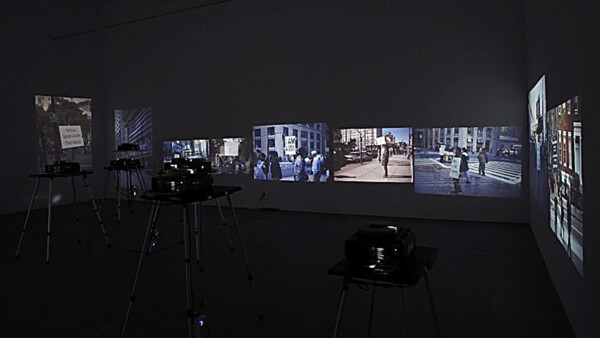
Figure 1: Lynne Cooke & Douglas Crimp, Mixed Use, Manhattan, 10 June–27 September 2010, Museo Nacional Centro de Arte Reina Sofía in collaboration with the Festival Internacional de Fotografía y Artes Visuales PHotoEspaña 2010.
From the 1960s on, several artistic practices have proposed an alliance based on intersubjective collective work and by seeing the environment from perspective of fragility as an ecological power, in order to create and live together. In these practices, the frail would be a space within which to activate the pulse of life in view of a necrocapitalist system. Artistic practices have mainly faced this system of fragility from the molecular domains of desire, affections and sensibilities towards social, ecological and architectural systems. An example, perhaps too explicit, was Projects: Pier 18 in 1971. In this project, 27 artists – all of them male –, among which were Vito Acconci, Gordon Matta-Clark and Italo Scanga, put their bodies in constrained situations, confronting the fragility of the abandoned and decayed NY pier with their own corporality. Paradoxically, these artistic actions were taking place in the same space as other affective and sexual alliances that were even more fragile and quotidian: the pier as a place of homosexual cruising, as was presented in the 2010 exhibition Mixed Use, Manhattan. (Figure 1)

Figure 2: Gérard Courant, Ocaña, der Engel der in der Qual singt (Ocaña, el ángel que canta en el suplicio), Super 8 film converted to video, 10’, 1979, Museo Nacional Centro de Arte Reina Sofía Collection.
In the Spanish state, Ocaña and other agents of Barcelona’s counterculture of the late Franco regime and transition period, developed an accurate exercise of life. With his actions, Ocaña situated the → transvestite body and subjectivity at the centre of the social debate through parody and appropriation of popular culture, activating the fragility of sexual ambiguity with an approach from the tacky, kitsch, camp and queer. While the body will be the centre of this attitude of inversion when treating himself as a “lost decadent”, the same occurred with some of his sculptures and paintings, in that “it could be either the Virgin Mary or any whore from the Rambla”, as Ocaña pointed out. In the video Ocaña, el ángel que canta en el suplicio (Ocaña, the angel who sings in the torture), 1979, by Gérard Courant, Ocaña assumes his fragility in front of the iconic Marilyn Monroe: “You are not aware of how much I suffer, you are not aware of the sadness I have at night”, he says in the subversive gesture of activating his fragile figure in the Berlin cold outside the Brandenburg Gate. (Figure 2)
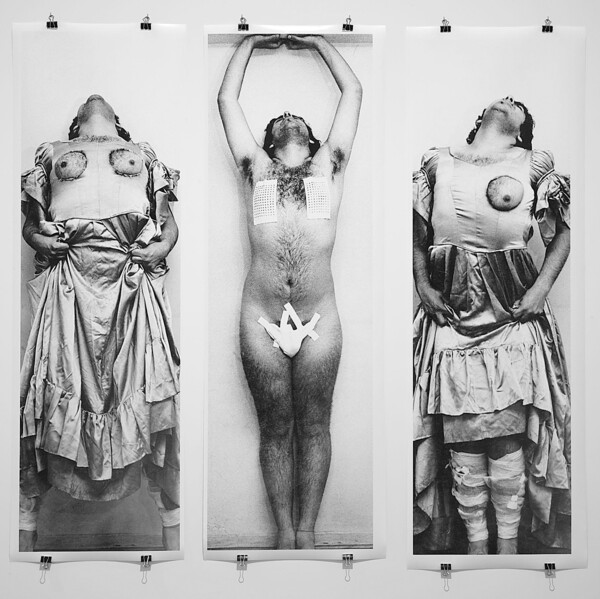
Figure 3: Carlos Leppe, El perchero (The Clothes Rack), overall: 173 x 180 cm / each part: 173 x 58 cm; edition/serial number: 3/5; gelatin silver print on paper, Santiago de Chile, photograp1975, Museo Nacional Centro de Arte Reina Sofía Collection.

Figure 4: Diamela Eltit, Zona de Dolor I (Pain Zone I), video, 16’ 3’’, 1980, Museo Nacional Centro de Arte Reina Sofía Collection.
The very same principle of affirmation of fragility to confront different ecologies from the molecular domain of desire is present in other artists’ work. In Chile, for instance, Carlos Leppe used transvestism and patches as tools for denouncing the system of corporal repression that existed during the early years of Pinochet’s dictatorship in El perchero (The Clothes Rack), 1975. (Figure 3) Diamela Eltit in Zona de dolor I (Pain Zone I), 1980, did something similar when proposing a healing act for the triple discrimination that the sexual workers of the city were undergoing, in a gesture in which the writer and performer sees herself. (Figure 4)
"Without forgetting the suffering and urgency, my own social stratum and the mental abandonment of those deprived from exerting their thought (…) the pain of legal distance, favouring so the pamphlet, the mystical acts, the desire for corporal abstraction as a way of power, alcoholism, certain kinds of delinquency, any kind of clinical madness. I depart from these entities waiting for the cleansing as long as the social coordinates we are used to obey are resolved."

Figure 5: La Red Conceptualismos del Sur, Losing the Human Form, 26 October 2012 – 11 March 2013, 2012, Museo Nacional Centro de Arte Reina Sofía and Agencia Española de Cooperación Internacional y Desarrollo (AECID).
At the same time, in different actions Las Yeguas del Apocalipsis were dealing with bigger systems through the micro-politics of the fragilised body: from the heteropatriarchal foundation of the University of Chile (1988) to the cueca sola[10] of the mothers of the forced disappeared in La conquista de América (The Conquest of America), 1989, that was presented in the 2012–2013 exhibition Losing the Human Form. A Seismic Image of the 1980s in Latin America. (Figure 5) Meanwhile, in the performance Hospital del trabajador (Worker’s Hospital), 1980, Pedro Lemebel recovered the real immolation of the citizen Sebastián Acevedo that occurred years before in the city of Concepción. Acevedo reached the full political and symbolic potential of the body fragilised by the dictatorship, setting himself on fire and demanding an urgent response: his sons’ whereabouts, who went missing under the regime. His action gave force to the birth of the Sebastian Acevedo Movement Against Torture that, working from the principle of non-violence, activated the Chilean public space by pointing out the places of torture and → missing people. Along these lines the Argentinean Siluetazo, 1983, also implied the transference and inscription of a social demand (turn up alive) with the present bodies in the public plaza: a process of lending the body, in the already decadent but still genocidal Argentinean dictatorship, where it became re-exposed for the fragile and possibly missing.
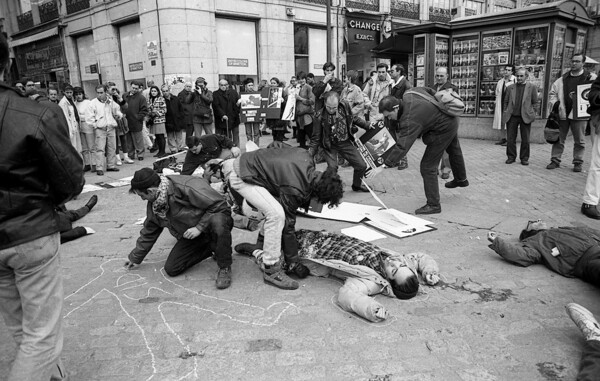
Figure 6: Andrés Senra, 20 retratos de activistas queer de la Radical gai, LSD y RQTR en el Madrid de los noventa [20 Portraits of Queer Activists from the Radical gai, LSD and RQTR in Madrid from the Nineties], 2h 8´ 49˝, 2014, Museo Nacional Centro de Arte Reina Sofía.
Apart from the corporal politics developed against dictatorships and transitions to democracy, sexual politics, and AIDS in particular, are those that have insisted on this question in a clearer way. Radical Gai and the LSD collective did the same in Madrid in the early 90s through a shared appropriation of the public space; right before, the artist Pepe Espaliú had mobilised a collective subjectivity to share the stigma and social burden that symbolised his own body in the action Carrying, 1992. (Figure 36) The artist was carried and passed from hand to hand during the action, which was carried out in Madrid from Galería La Máquina Española to the Museo Reina Sofía, where he was received by the museum’s director, María de Corral. The next year, Espaliú performed his last artwork, El nido (The nest), in Arhhem. For eight days, he climbed up a tree with a nest in the Gemeentemuseum’s garden, where he took off one of his eight garments and walked an increasing number of times around the trunk, subjectivising the building up of the nest, activating the fragility of his sick body, but also of the house as a place of presumed safety. These examples, connected to the lines of research and recent acquisitions of the museum, have been working on the basis of this common fragile subjectivity, weaving new ecologies for creation and cohabitation. To them and us alike, fragility is not the premise of a dilapidated future or heroic martyrdom, but a space to activate the power of life against a necrocapitalist system.


